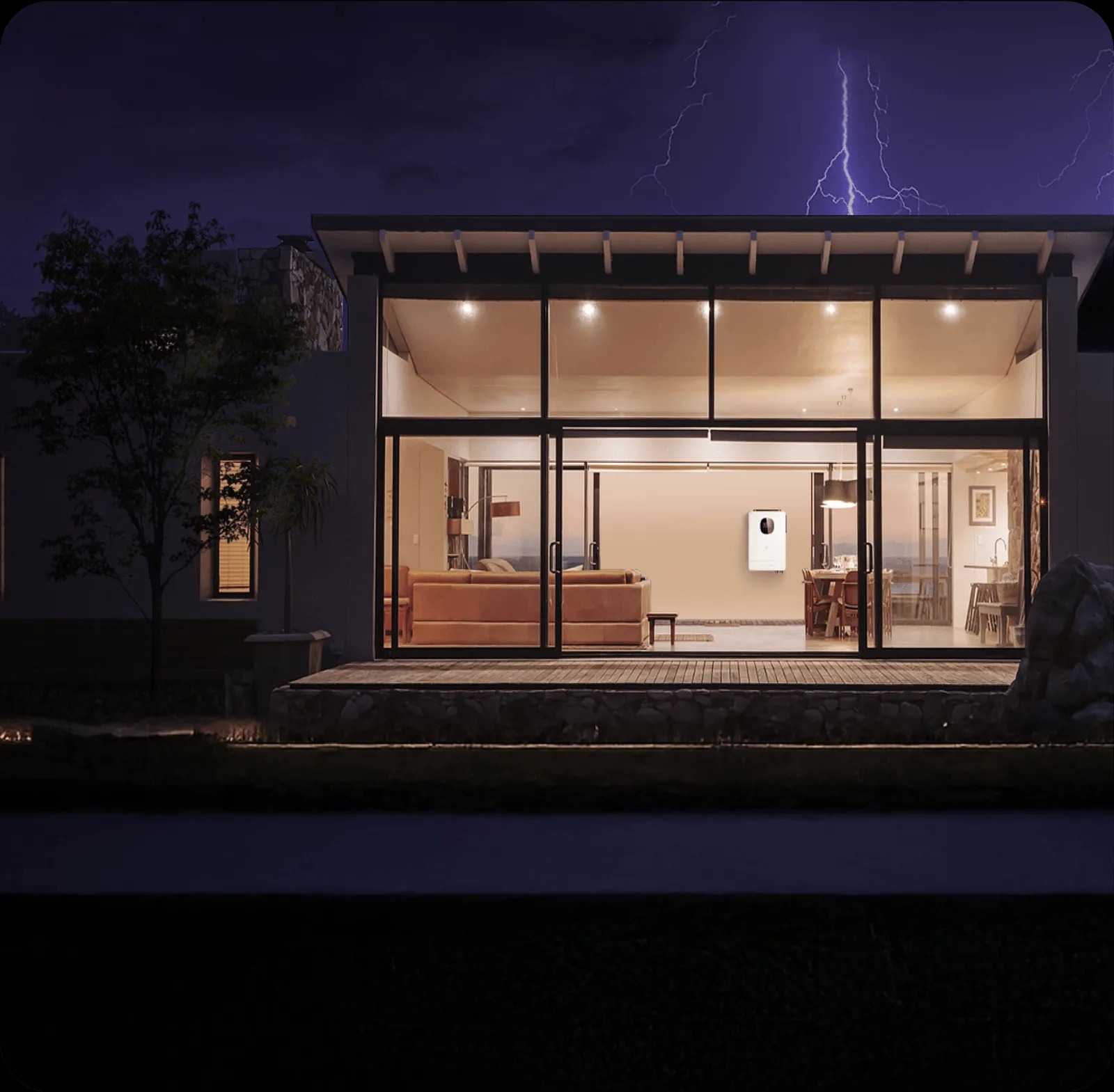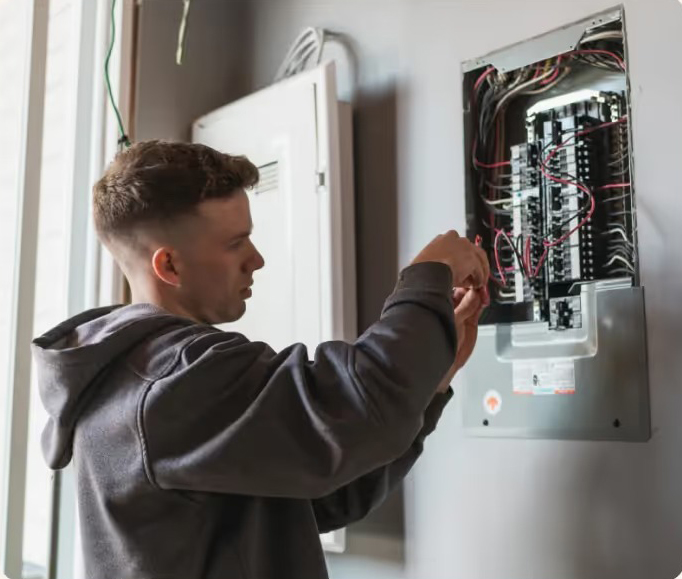
Florida's hurricane season demands reliable backup power solutions. Proper generator preparation—including system inspection, fuel verification, automatic transfer switch testing, and professional maintenance—ensures your home stays powered through extended outages. Expert installation and seasonal readiness checks protect your family, property, and peace of mind when storms strike.
Florida faces an average of 19.1 hours of power outages annually, the highest in the nation according to the U.S. Energy Information Administration.When hurricanes make landfall, those outages can extend for days or weeks, threatening food safety, home security, medical equipment operation, and basic comfort in sweltering heat.
Yet many homeowners who've invested in backup generators discover during emergencies that their systems aren't ready. Dead batteries, stale fuel, corroded connections, or improperly configured automatic transfer switches can render even the most expensive generator useless precisely when you need it most. Professional preparation transforms your generator from a potential liability into a reliable lifeline.
Your generator requires a comprehensive evaluation before hurricane season begins each year. Licensed technicians examine critical components that homeowners often overlook: battery voltage and terminal connections, coolant levels and condition, oil quality and proper viscosity for Florida's climate, fuel lines for cracks or deterioration, and control panel functionality.
Florida's vulnerability to hurricanes remains constant, with warmer ocean temperatures and climate patterns continuing to fuel more intense Atlantic hurricane seasons, making proactive maintenance non-negotiable.A generator that runs smoothly during weekly exercise cycles can still fail under sustained load during actual outages if underlying issues go undetected.
Professional inspections also verify your generator's capacity matches your home's current electrical demands. Many homeowners add appliances, HVAC systems, or home offices without reassessing their backup power needs, potentially overloading their system during emergencies.

Standby generators typically run on natural gas or propane. Natural gas systems require verification that supply lines remain unobstructed and pressure regulators function correctly. Propane systems need tank level checks—many families have been caught with insufficient fuel reserves when storms approach and suppliers become overwhelmed with last-minute requests.
Fuel quality matters just as much as quantity. Propane tanks should maintain at least 30% capacity year-round to prevent moisture accumulation, which can cause system damage. Natural gas connections must be inspected for leaks using proper detection equipment, as even small leaks pose safety risks and reduce available fuel pressure during operation.
Your automatic transfer switch (ATS) is the brain that detects power loss and seamlessly transitions your home to generator power. A faulty ATS means manual intervention during storms—potentially dangerous when weather conditions make outdoor access hazardous.
Professional testing simulates actual outage conditions, verifying response times, proper load management, and safe reconnection when grid power returns. Modern generators can restore power within 8-10 seconds, but only if the ATS functions correctly. Many homeowners discover during pre-season checks that their ATS requires recalibration or component replacement to maintain this critical performance standard.

Generators should run weekly for 15-20 minutes under load. However, simply hearing your generator turn on doesn't confirm it's generating sufficient power or that all systems function properly. Professional monitoring tracks performance metrics that predict potential failures before they occur.
Florida's humidity, salt air (in coastal areas), and intense heat accelerate component degradation. Standard maintenance schedules designed for temperate climates prove insufficient for Florida conditions. Corrosion protection, enhanced cooling system maintenance, and weather-resistant component upgrades extend system life and ensure reliability.
Your home's electrical profile changes over time. New appliances, additional circuits, or renovated spaces alter power requirements. Operating a generator beyond its rated capacity causes premature wear, overheating, and potential failure during extended outages. Load management assessments ensure your system can handle your household's actual demands.
Minor issues discovered during routine exercise cycles—unusual sounds, longer startup times, or inconsistent operation—often worsen rapidly. What could be a simple repair in May becomes a system failure in September when parts are backordered and technicians are overwhelmed with emergency calls. Proactive service scheduling prevents crisis-mode situations.

Expert generator preparation goes beyond basic maintenance. Certified technicians understand Florida-specific challenges: the impact of sustained high humidity on electrical connections, how saltwater environments affect metal components, and the unique load demands of homes that rely heavily on air conditioning during summer storm season.
Professional services include comprehensive documentation of your system's condition, creating baseline performance data that enables early detection of developing problems. Thermal imaging identifies hot spots in electrical connections before they cause failures. Load bank testing verifies your generator can sustain full output for extended periods, not just during brief weekly cycles.
Most importantly, professional preparation includes emergency support planning. When hurricanes approach, having an established relationship with a qualified service provider means you're not competing with thousands of other homeowners for limited appointment slots. Your system receives priority attention because it's already in their service network.

Hurricane season preparation isn't just about having a generator—it's about having a generator you can trust when Florida's most dangerous weather arrives. Professional inspection, maintenance, and testing transform backup power from a hope into a guarantee, protecting your home, family, and investments through whatever storms the Atlantic sends our way.
The difference between weathering a hurricane with power and enduring days of dangerous heat, spoiled food, and security concerns often comes down to preparation completed months before the first storm warning. Working with qualified professionals ensures your generator system meets Florida's demanding conditions and performs flawlessly when it matters most. Secure your storm readiness today and face hurricane season with confidence, not anxiety.
Florida's hurricane season runs June through November, but the best time to prepare is now—before the first named storm forms. Contact our experienced team to schedule your comprehensive generator readiness assessment. We'll evaluate your system's condition, verify its capacity meets your home's needs, and ensure every component is storm-ready.
Our technicians specialize in Florida's unique climate challenges and have prepared thousands of backup power systems across the state. Don't wait until forecasts show a storm heading toward your community. Secure your family's comfort, safety, and peace of mind with professional generator preparation today.